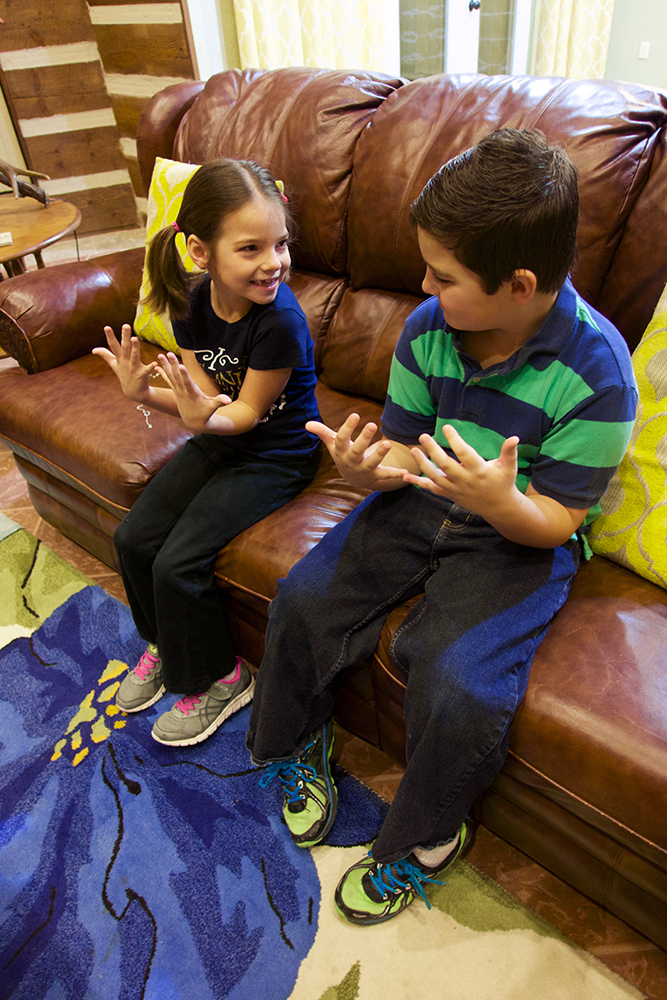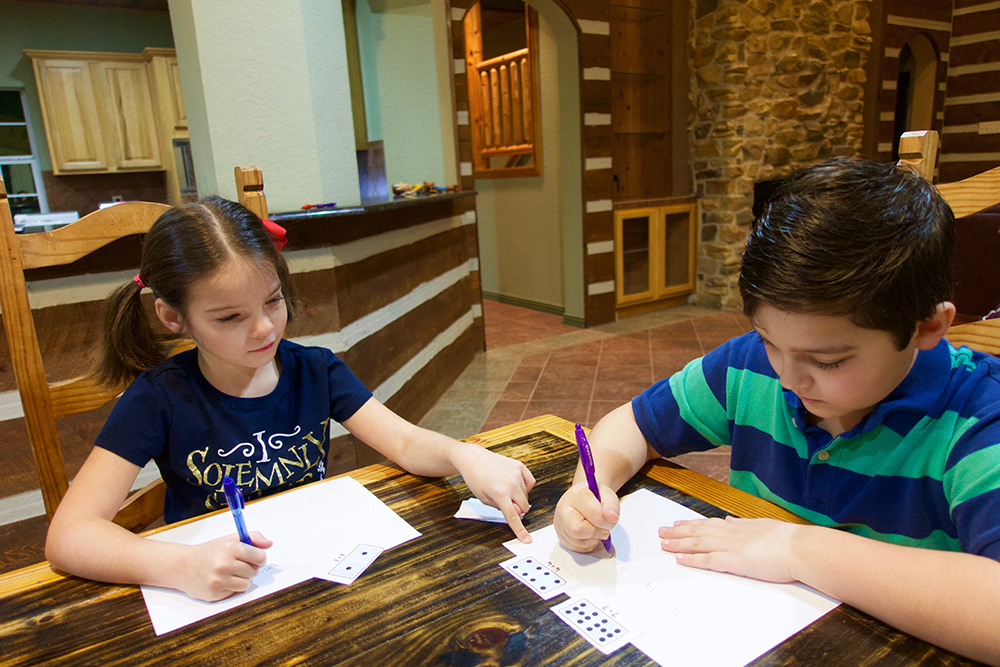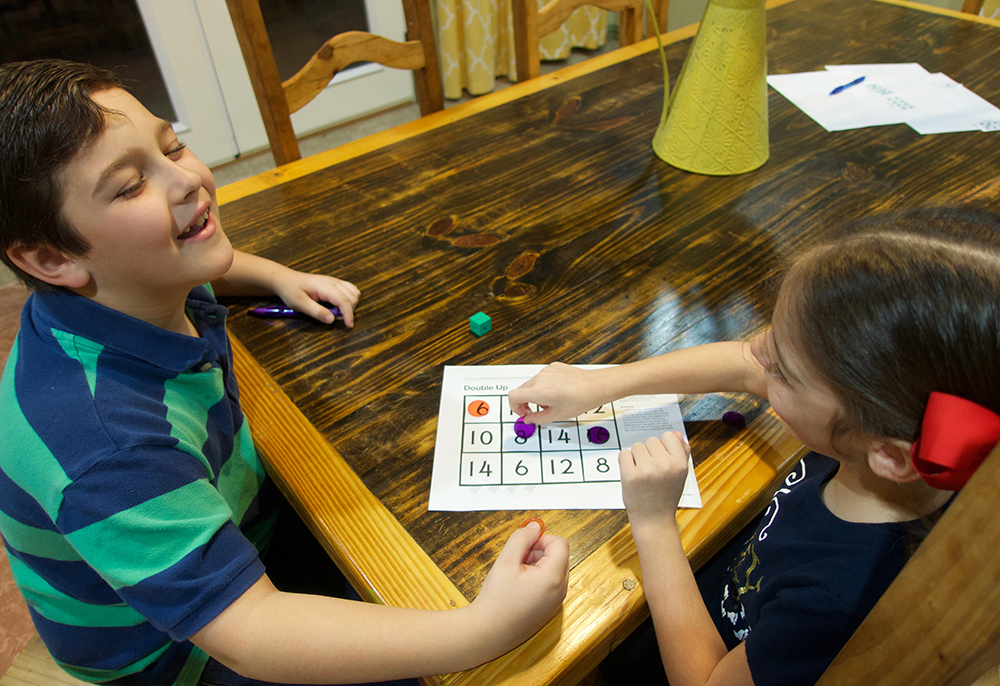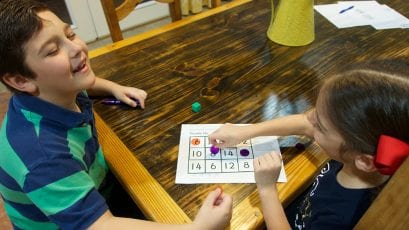Addition and Subtraction
The Use-Doubles Strategy for Addition: Making it Easy and Fun for Your Students!
The use-doubles strategy for addition can be one that children struggle with in the beginning.
It involves a deep understanding of the number system, and how to compose and decompose numbers in a flexible way. However, fear not my fellow educator! Here are some easy and fun ways to ensure your students succeed with this strategy and come to rely on it when needed! To learn more about mastering doubles facts with the use-doubles strategy for addition, check out this ORIGO One video.
Teaching the use-doubles strategy for addition from ORIGO Education on Vimeo.
Doubles Facts Fluency: Doubling Strategy Games and Activities
Just like the count-on strategy for addition, children need to be able to engage with the use-doubles strategy for addition with interactive and memorable activities to link the strategy to long-term understanding. Below are some teacher-tested and student-approved activities to support fluency with the doubles facts.
Introduce the Use-Doubles Strategy for Addition
To introduce the doubles strategy, you need to ensure children can experience the math with hands-on activities. The key to this concrete experience is allowing children to see the numbers as quantities rather than symbols.
What you need: A building and outdoor area
What you do: Take the children on a learning walk around the school and outdoor areas.
What the children do: In pairs, encourage the children to discuss various doubles they see in their environment. For example, they may see two front tires and two back tires on a car to equal four. The children may also see two rows of six seats that make up their cafeteria tables to equal 12. Encourage the pairs to write down their doubles discoveries in their journal to discuss with the class later.

In this picture, you will see a pair of children looking at their hands. The child explains her doubles thoughts to her partner. I have five fingers on one hand and five fingers on the other. 5 add 5 is 10.
Doubles Facts: Reinforce the Strategy
Once children have done many concrete and pictorial activities to understand the doubles strategy, then you can move to the reinforce stage of the learning progression. This is when children start to link the concrete and pictorial understanding to an abstract and symbolic representation.
What you need: 2 sets of doubles dominos, writing paper, pencil
What you do: Cut out the doubles dominos and place face down on the table.
What the children do: Taking turns, two players will see who can get a total of 20 more quickly. Player 1 will turn over a doubles domino, then write the number fact on their sheet of paper and solve the sum. Player 2 will do the same. Play will continue until one player’s sum has reached 20, or more, in total.

In this picture, you will see a child writing the doubles number sentence to match the domino. Then, the child says his answer out loud to his partner. I turned over double seven. 7 add 7 is 14.
Doubles Facts Fluency and Recall: Practice the Strategy
Once the children have made the connections between concrete, pictorial, and symbolic representations with the doubles facts, now it is time to practice fluency and recall.
What you need: Fundamentals Double Up Game Board, counters, 1 cube labeled 3, 4, 5, 6, 7, 8
What you do: As the children play the game, Ask questions such as What numbers on the number cube could you double to give you an answer less than 13? What do you need to roll to win the game?
What the children do: In a group of two, children will roll the cube, double the number, and place their personalized color counter on the answer. Each child takes a turn until all spaces are filled up. If there are no more answers on the board for a rolled amount, the player loses their turn. The winner is the player that has the most counters on the game board.

Strategy Tip: Encourage the children to solve the answer aloud to the group. This helps the child verbalize their math understanding, and the other children in the group hear different ways to solve the problem.
Doubles Facts Mastery: Extend the Strategy
Encourage children to apply this strategy to numbers beyond the basic facts. For example, the strategy can be extended to solve 25+25. This is specifically highlighted in the ORIGO One video referenced earlier in this blog!
The use-doubles strategy for addition is one of many important strategies included in The Box and Book of Facts for Addition and Subtraction from ORIGO Education. Use these strategies to grow the doubles fact fluency and mental computation power of YOUR students!
If you would like to download more games, worksheets and activities, click the ORIGO Insights Resource Hub for the downloadable resources!
About ORIGO Education
ORIGO Education is dedicated to making learning meaningful, enjoyable and accessible for all students with Pre-K and Elementary print and digital instructional materials, as well as professional learning for mathematics.
![]()





